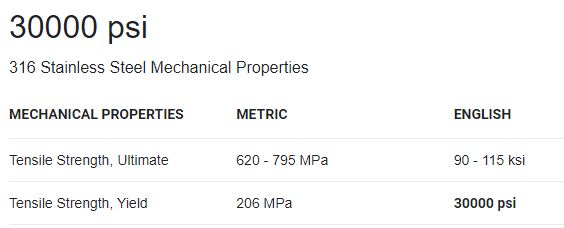Well, according to Google, 6061 aluminum actually has a little higher yield strength than 316 stainless. Yeah, doesn't seem right to me either. . . The ultimate tensile strength is more than double for 316. Yield strength is the point where the stress has permanently (plastically) deformed by 0.2% of the original length/feature. UTS is max load before it flat-out breaks.
Your part will deal with a bending moment; important feature is called the moment of inertia. For something like a 2 x 4, the formula is "(base x height^3) / 12". For a 2 x 4 laying flat, math is 2.666 vs. 10.666 for a 2 x 4 on edge (4 times stiffer on edge than on a flat). If you reduce the height by a factor of two (and keep the base the same), the part will have a moment of inertia 12.5% of the original. If using the same material and loading between the two, your yield strength would also be reduced down by a factor of 8.
Based on the Google charts for yield strength, you shouldn't reduce the flange thickness if you are worried about the part starting to give. However, your original part may have a large safety factor giving you some room to reduce it in 316 (or aluminum).
If worried about ultimate failure, you should be able to get away with about 1/2" 316 which would give you roughly the same safety factor.
If the aluminum is 0.625" thick, cubing it gives 0.244 in^3. Since the UTS of the 316 is roughly double 6061, divide the 0.244 by 2 or about 0.125 in^3. Cube root of 0.125 is 0.5".
All that being said, I had the classes in strength of materials in 1979. Maybe wait for someone with a better memory than mine to chime in!
Bruce








